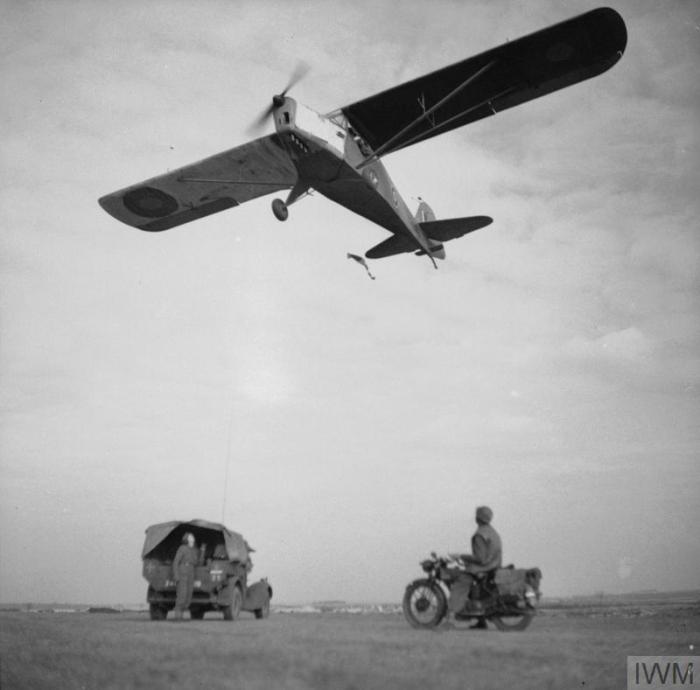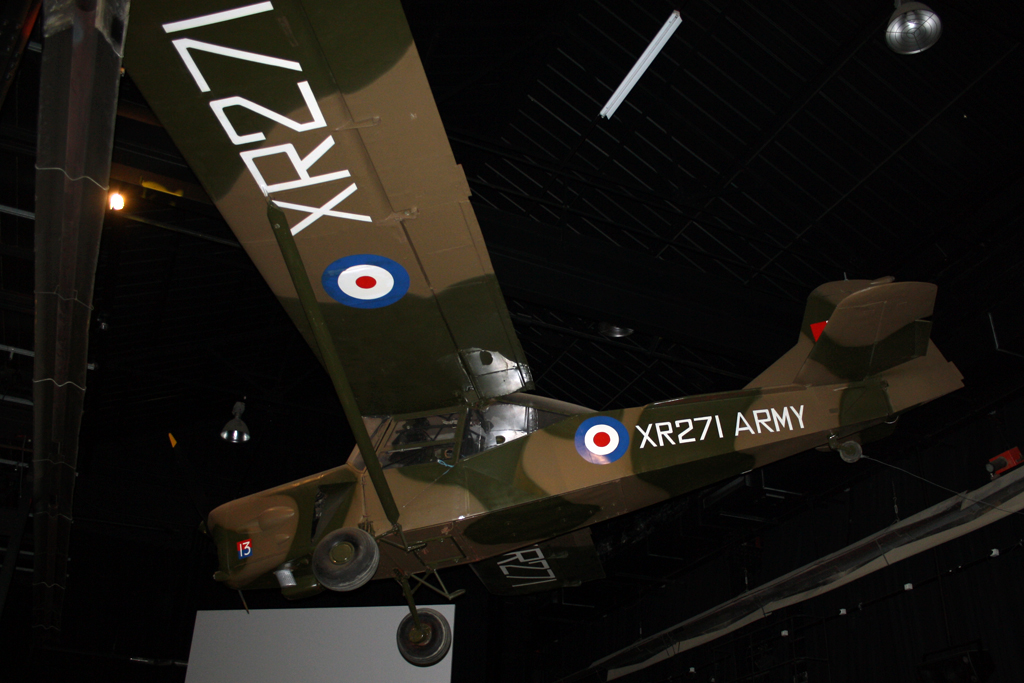Auster AOP9 XR271
The Auster AOP Mk 9 was the last in a line of Auster aircraft used as Air Observation Post (AOP) aircraft stretching back to the Second World War.
Air Observation Posts are aerial platforms used for artillery spotting, particularly target location and observing and reporting on fall of shot from RA guns on the ground. The use of observation balloons began during the French Revolutionary Wars and was extensively used during World War 1. In the interwar period, artillery spotting was carried out by Army Co-operation (AC) squadrons using the Westland Lysander aircraft.
The first AOP unit was established by Major Bazeley, RA and went to France in February 1940 as part of the RAF. The unit was withdrawn back to Old Sarum in May 1940 and was ordered to disband. Following an intervention by General Alan Brooke, the future of the flight and the concept of the AOP was secured, leading to the establishment of three dedicated AOP squadrons by 1942.
These AOP squadrons were formally part of the RAF although they were manned largely by Royal Artillery personnel, with a core staff of RAF personnel. The pilots were mostly RA Captains, and a number were awarded the Military Cross and the Distinguished Flying Cross for their activities and bravery. After the war, the surviving squadrons were transferred to the Army Air Corps (AAC).
Various marks of Auster aircraft were used by AOP squadrons throughout the Second World War and the Korean War. Between 1939 and 1945 operations were carried out in North Africa and Italy. Following the D-Day landings, Austers supported the push through France, Belgium, Holland and Germany. Equally important and dangerous were the operations carried out by 656 Squadron to support the 14th Army fighting the Japanese in Burma. One notable mission was carried out at the very end of the Second World War when 658 Squadron gathered evidence of what had been happening at Bergen Belsen concentration camp. The pilot concerned took aerial photographs of the camp which alerted army commanders to the appalling conditions there. The squadron also flew Brigadier Glyn-Hughes into the camp so that he could coordinate relief efforts for the survivors.

A Taylorcraft Auster Mark III of No. 655 Squadron dropping a message bag to a Royal Artillery wireless truck on the airfield at Fowlmere, Cambridgeshire, during Exercise SPARTAN. (Source: © IWM (H 27983)
Our aircraft, XR271, was built in February 1962, and its official designation is Auster B-5 AOP9, Constructor’s number B5/10/188. Unlike some earlier marks of Austers, it could carry three crew members, including a Radio Operator in the rear seat. In previous marks of Auster, the pilot had to operate the radio as well as piloting the aircraft and carrying out the observations (sometimes pilots also had to take drastic evasive action to escape attacking enemy fighters such as Messerschmitt Bf109s and Mitsubishi A6M Zeros!).
XR271 was issued to the AAC in Middle Wallop on 6th April 1962, there is evidence that it was the last AOP9 aircraft delivered to the AAC. It was recorded as appearing at a Middle Wallop Airshow in July 1963 and records indicate that this Auster was used as a training aircraft between at least December 1962 and October 1964. It was transferred to 19 Maintenance Unit at St Athan for long-term storage on 18 January 1967, declared a non-effective airframe on 8 November 1968 and transferred to the School of Artillery in Larkhill for display on 2 March 1970. It was subsequently displayed in Firepower in the ‘Field of Fire’ gallery before being transferred to secure storage. A sister aircraft, WZ721 is currently displayed at the Army Flying Museum in Middle Wallop, Hampshire.

Auster XR271 on display in the Firepower Museum in Woolwich (Photo © PhilG)
The RA Museum has launched an Oral History Project which is recording the memories and experiences of Gunners in conflict and military life which will be held in the Archive as a resource for future generations. If you worked with the Auster in the OP role, or know someone who did, we would very much like to explore the possibility of interviewing you about your experiences. Please contact enquiries@royalartillerymuseum.com
